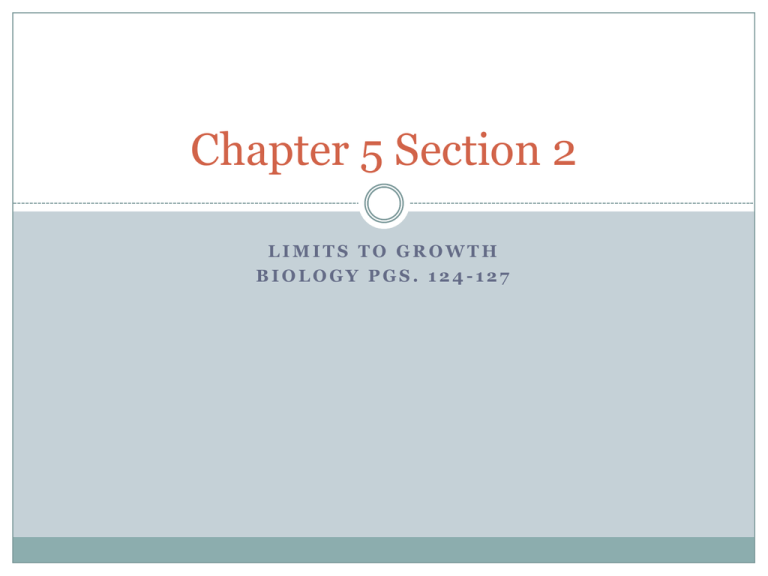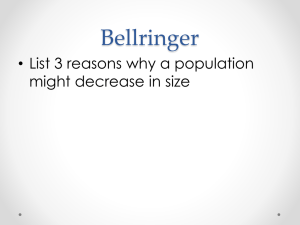
Chapter 5 Section 2
LIMITS TO GROWTH
BIOLOGY PGS. 124-127
Objectives
List
______________
factors that limit population
growth
Distinguish
__________________ between densitydependent and density independent limiting factors.
Limiting Factors
The primary productivity of an ecosystem can be reduced when
there is an insufficient supply of a particular nutrient.
Ecologists call such
limiting nutrients
substances______________________________.
A limiting nutrient is an example of a more general
ecological concept: a limiting factor.
In the context of populations, a
limiting factor
___________________is
a factor that causes
population growth to decrease.
Density-Dependent Factors
A limiting factor that depends on population size is called
density-dependent limiting factor
a__________________________________________.
Density-dependent limiting factors include:
_____________________
competition
predation
parasitism
disease
Density-dependent factors operate only when the population
density reaches a certain level. These factors operate most
strongly when a population is large and dense.
small
They do not affect______________,
scattered populations
as greatly.
Competition
When populations become crowded, organisms
compete
_____________for
food, water space, sunlight, and other
essentials.
Competition among members of the same species is a densitydependent limiting factor.
Competition can also occur between members
different species
of____________________.
This type of competition can lead to evolutionary
change.
Over time, the species may evolve to occupy different
niches.
Predation
Populations in nature are often controlled by predation.
The regulation of a population by predation takes place within
predator-prey relationship
a_______________________________,
one of the bestknown mechanisms of population control.
Density-Dependent Factors
Wolf and Moose Populations on Isle Royale
Moose
Copyright Pearson Prentice Hall
Wolves
Parasitism and Disease
Parasites can limit the growth of a population.
A parasite lives in or on another organism (the host) and consequently
harms it.
Density-Independent Factors
Density-independent limiting factors
________________________________________affect
all
populations in similar ways, regardless of the population size.
Examples of density-independent limiting factors include:
unusual weather
natural disasters
_________________
seasonal cycles
certain human activities—such as damming rivers and clearcutting forests




